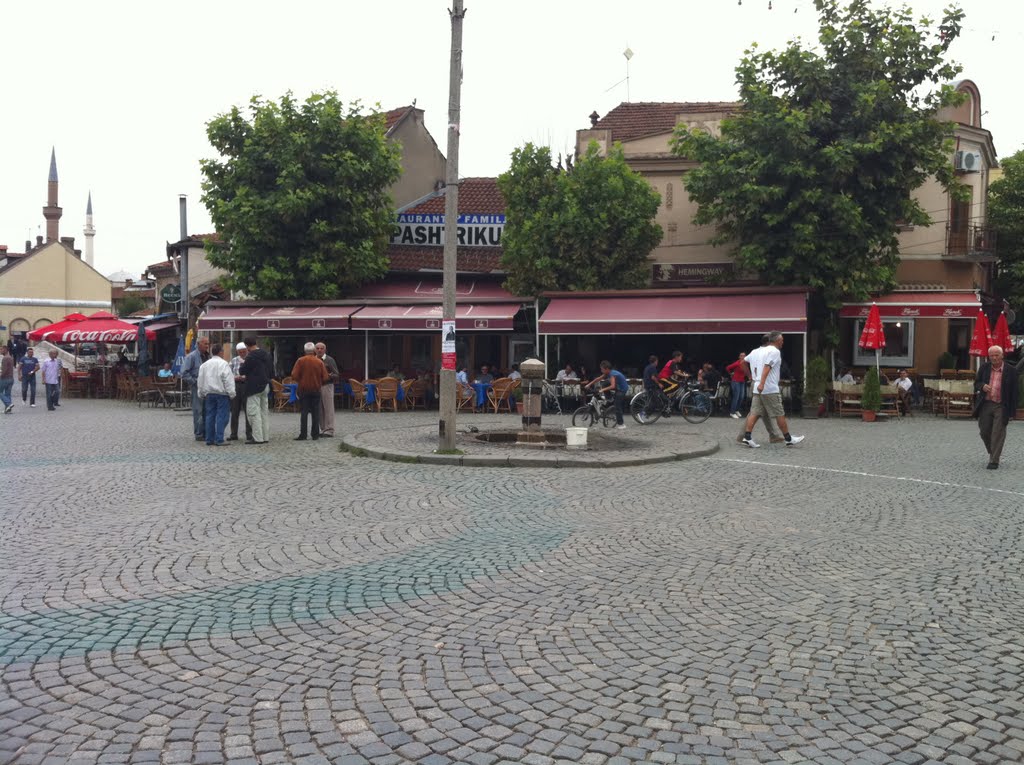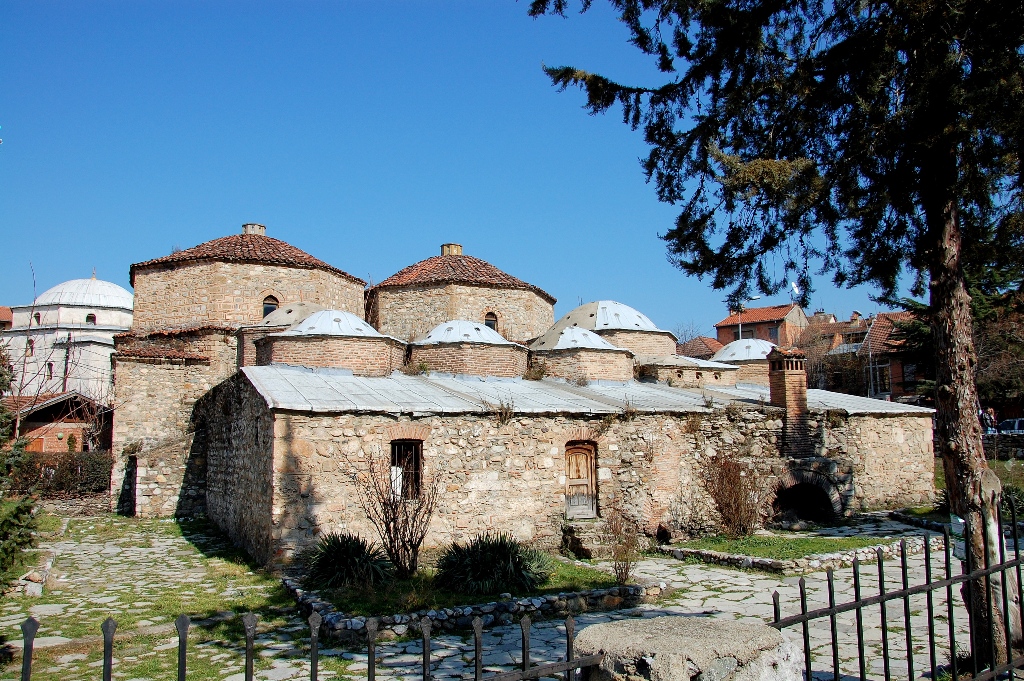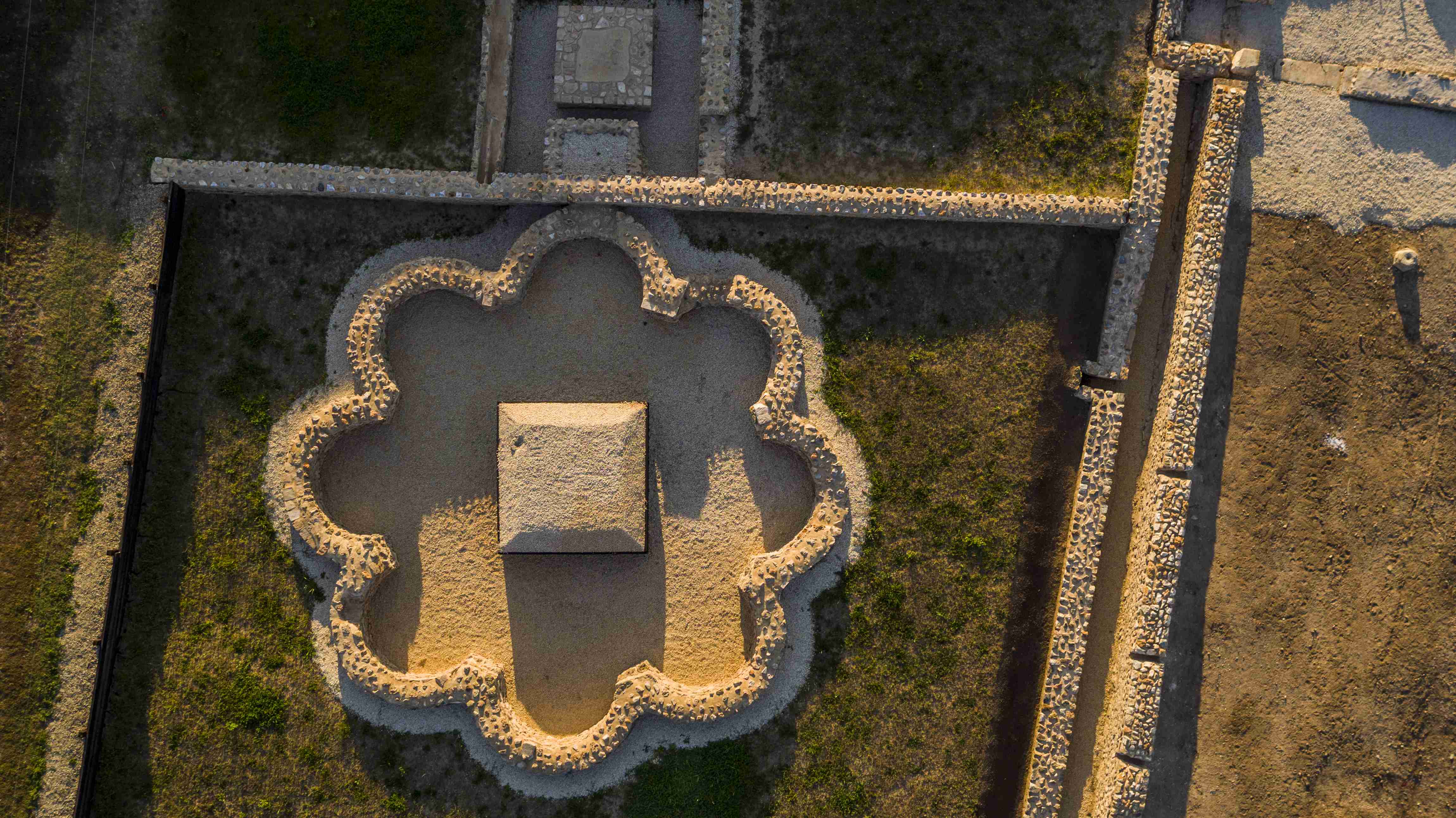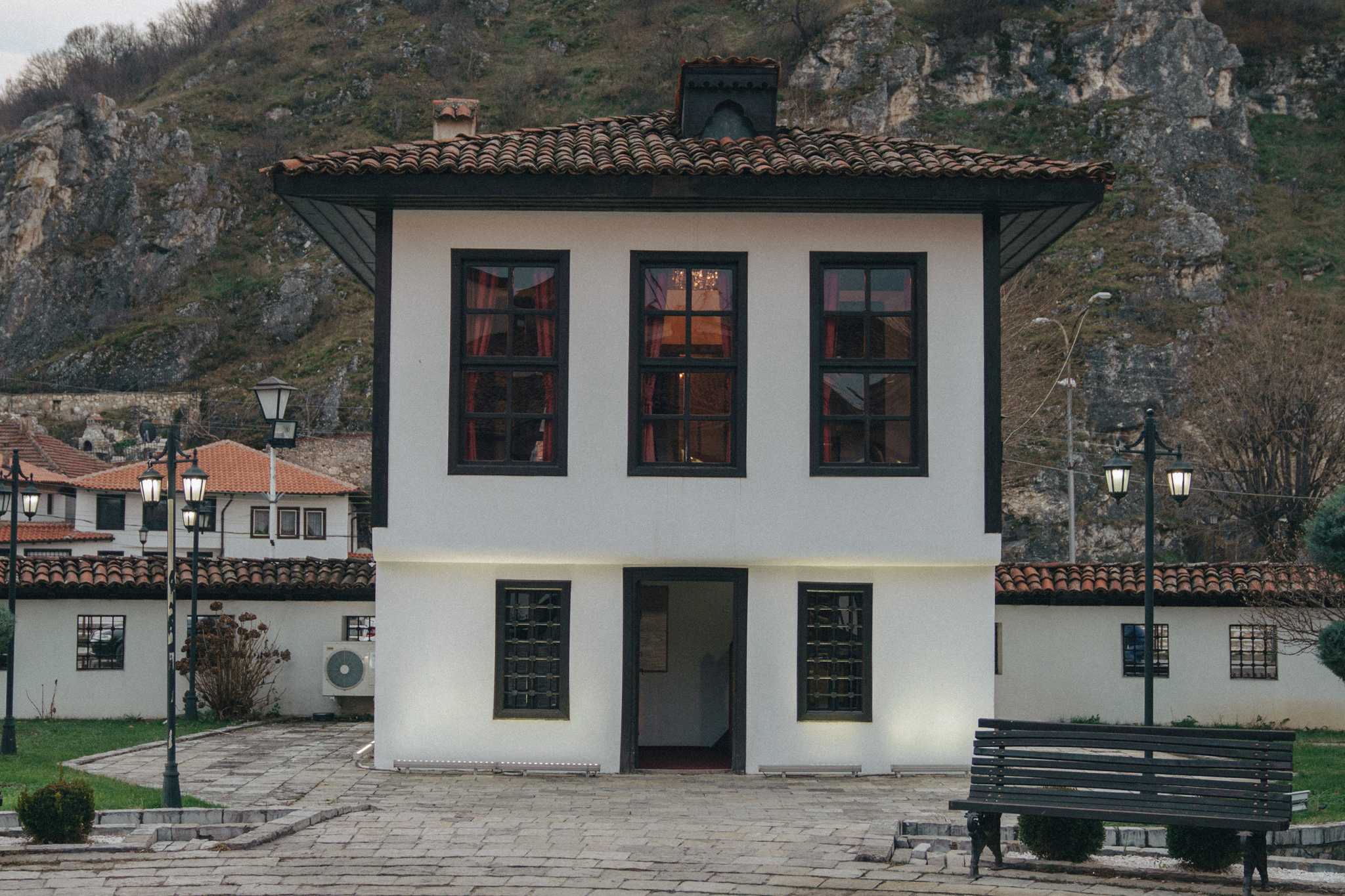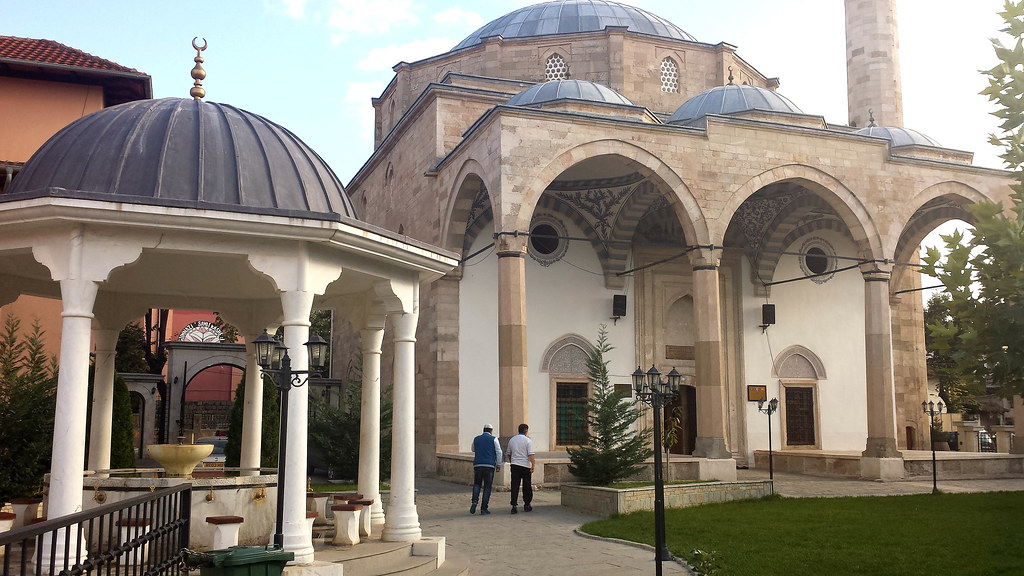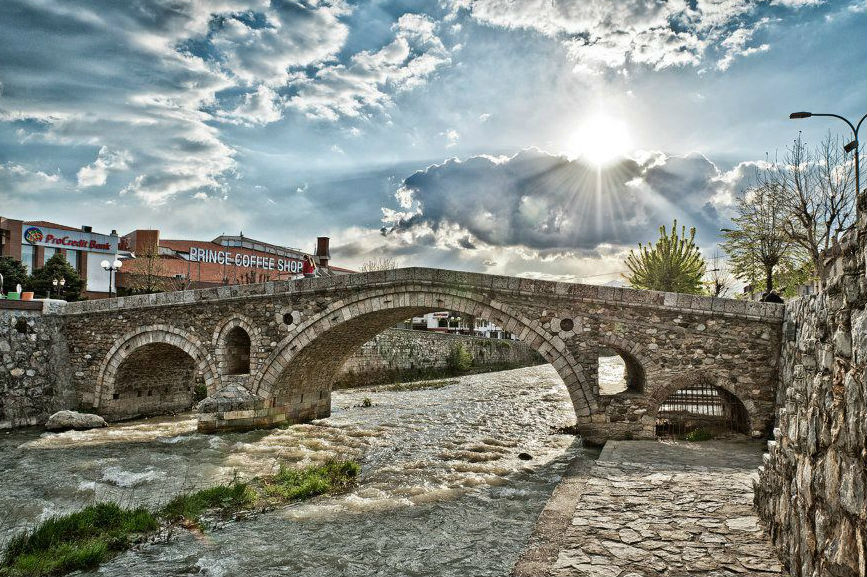Through Prizren crosses the Lumbardhi River, which divides the city into two equal parts. Over the Lumbardhi of Prizren, in the course of history, many bridges were erected but undoubtedly the most special that became a symbol of the city is the Stone Bridge. The Stone Bridge is located in the center of the Old Town. On the east side there is the bridge of "Arasta", on the west side is the bridge of "Naleti". The bridge connects directly to Shatravan Square (on the left side of the river) and Saracana (to the right of the river). Historical sources do not provide data on the exact time of its construction. On the basis of material, style, construction technique, it is assumed that the bridge was built towards the end of the XV century, or at the beginning of the XVI century. The old bridge is constructed of quality stones processed and bound together with limestone. The old bridge was tri-square, the middle arch was larger, and the lateral arches smaller. The length of the former bridge was approximately 30m, while the current bridge is 17m. The length of the large arch is 10m, the height 5m. Side arches 4m long, 3m high. The bridge also has a small auxiliary bow 103cm long and 160cm high. The track width is 4.20m and is paved with cobblestones. The bridge has a 40cm fence that follows its leveling and served only for pedestrians. In the course of history, the bridge has undergone some major changes. It suffered serious structural damage during the construction of the Lumbardhi bed in the 1960s. On this occasion, its arch, completely to the left of the river, completely closes. However, the right-hand side of the bridge was damaged when the road was built on the right-hand side of the river in 1963. The greatest risk was due to natural factors. The flood of the river on 17/18 November 1979 caused the bridge to be completely destroyed. The Prizrenians eager to destroy the bridge were mobilized, and according to the project designed by M. Gojkovic, ing., On June 5, 1982, work on its reconstruction began. Restoration works were carried out by the Enterprise "Elan", under the supervision of the Cultural Monuments Protection Office of Prizren. The solemnly rebuilt bridge was inaugurated on November 17, 1982. Thus the bridge naturally comes into its own and continues to function as a pedestrian bridge. Taking into consideration the genuine values of the heritage, the Stone Bridge by decision no. 2345 dated December 31, 1948 is placed under state protection.
 en
en al
al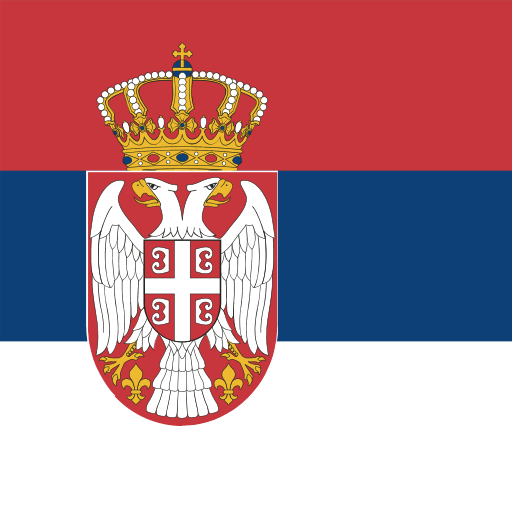 srb
srb
